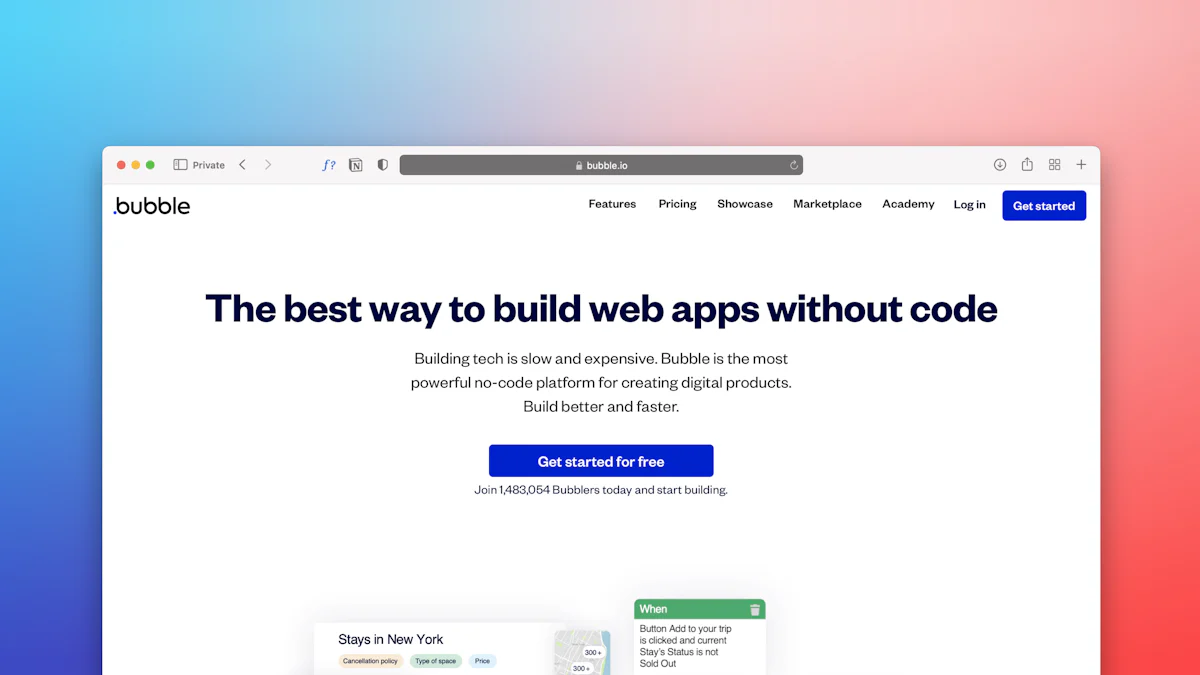Comparing SaaS and Traditional Software Models

In today's digital landscape, software models play a crucial role in shaping how businesses operate. SaaS (Software as a Service) companies must choose the right model to meet their business needs effectively. Two primary models dominate the market: SaaS (Software as a Service) and traditional software. SaaS (Software as a Service) solutions have seen a remarkable rise, with SaaS (Software as a Service) companies using an average of 371 applications. This trend reflects the growing reliance on cloud-based software. By the end of 2023, nearly 99% of SaaS (Software as a Service) companies will use at least one SaaS (Software as a Service) solution. Understanding these models helps SaaS (Software as a Service) companies make informed decisions for their business.
Understanding the Basics of Software Business Models
Definition of SaaS (Software as a Service) Companies
SaaS (Software as a Service) Companies provide software solutions through the internet. You access these applications via a web browser, eliminating the need for installation on your local devices. This model operates on a subscription basis, allowing you to pay a recurring fee for access.
Characteristics of SaaS
SaaS offers several distinct features:
Accessibility: Access your software from anywhere with an internet connection.
Scalability: Easily adjust your usage based on your business needs.
Cost-Effectiveness: Lower upfront costs compared to traditional software.
Automatic Updates: Receive updates without additional charges or manual installations.
Integration: Seamlessly connect with other tools to enhance productivity.
Examples of SaaS Applications
Many popular applications fall under the SaaS category:
Google Workspace: A suite of productivity tools for communication and collaboration.
Salesforce: A cloud-based CRM platform that helps manage customer relationships.
Dropbox: A file storage service that allows you to store and share files online.
Definition of Traditional Software Models
Traditional software models require you to install the software directly onto your computer or server. You typically purchase a license, and you are responsible for maintenance and updates.
Characteristics of Traditional Software
Traditional software has its own set of characteristics:
Local Installation: Install the software on individual machines or servers.
One-Time Purchase: Pay a significant upfront cost for a perpetual license.
Control: Maintain full control over data and customization.
Manual Updates: Handle updates and maintenance yourself, often requiring IT support.
Examples of Traditional Software
Some well-known traditional software includes:
Microsoft Office: A suite of office applications installed on your computer.
Adobe Photoshop: A powerful image editing tool used by professionals.
Understanding these software business models helps you choose the right solution for your needs. SaaS (Software as a Service) Companies offer flexibility and ease of use, while traditional software provides control and customization. Evaluate your requirements to determine which model aligns best with your business goals.
Key Differences in Software Business Models

Deployment
SaaS Deployment
SaaS deployment offers a seamless experience. You access applications directly through the internet, eliminating the need for complex installations. This model allows you to start using the software quickly, as everything is hosted in the cloud. You can access it from any device, anywhere in the world. This flexibility makes SaaS an attractive option for businesses looking to reduce time to launch.
Traditional Software Deployment
Traditional software requires installation on individual machines or servers. You often face lengthy setup processes and need dedicated IT support. This method can be time-consuming and may lead to delays. Unlike SaaS, traditional deployment demands significant resources and infrastructure.
Cost
SaaS Cost Structure
SaaS operates on a subscription-based model. You pay a recurring fee, which often includes updates and maintenance. This structure spreads costs over time, making it more manageable for many businesses. SaaS reduces the need for large upfront investments and minimizes hardware expenses. It provides a cost-effective solution, especially for those seeking to avoid hefty initial costs.
Traditional Software Cost Structure
Traditional software typically involves a one-time purchase. You pay a significant upfront fee for a perpetual license. This model may require additional costs for updates and maintenance. You also need to invest in IT infrastructure and support. While it offers control, the financial burden can be substantial.
Maintenance and Updates
SaaS Maintenance
SaaS providers handle maintenance and updates automatically. You receive the latest features without extra effort or cost. This reduces the burden on your IT team and ensures that your software remains up-to-date. The centralized hosting of SaaS applications simplifies support and enhances efficiency.
Traditional Software Maintenance
With traditional software, you manage updates and maintenance yourself. This often requires dedicated IT resources and can lead to additional expenses. You must manually install updates, which can be time-consuming. The responsibility for keeping the software current rests with you, adding to the complexity.
Customization
SaaS Customization Options
With SaaS, you enjoy flexible customization options. Providers often offer a range of settings that allow you to tailor the software to your needs. You can adjust features, integrate with other tools, and personalize user interfaces. This flexibility makes SaaS appealing for businesses seeking adaptable solutions. The cloud-based nature of SaaS ensures that updates and customizations happen seamlessly, without disrupting your operations.
Traditional Software Customization Options
Traditional software offers deep customization capabilities. You have full control over the software, allowing extensive modifications to meet specific requirements. This control is beneficial for industries with unique needs. However, customization often requires technical expertise and can be time-consuming. You may need dedicated IT support to implement changes, which can increase costs and complexity.
Data Security and Compliance
SaaS Data Security Measures
SaaS providers prioritize data security. They implement robust security protocols to protect your data. Encryption, regular audits, and compliance with industry standards ensure that your information remains safe. SaaS platforms often include built-in security features, reducing the burden on your IT team. You benefit from continuous monitoring and automatic updates, enhancing overall security.
Traditional Software Data Security Measures
With traditional software, you manage data security yourself. This control allows you to implement specific security measures tailored to your needs. However, it requires significant resources and expertise. You must stay updated with the latest security practices and ensure compliance with regulations. This responsibility can be challenging, especially for smaller businesses without dedicated IT teams.
Decision-Making Guidance for Businesses

When deciding between SaaS and traditional software, you must evaluate your business needs carefully. Each model offers unique advantages and challenges, so understanding your specific requirements is crucial.
Evaluating Business Needs
Factors to Consider
Budget: Determine your financial capacity. SaaS solutions often involve lower initial costs but require ongoing subscription fees. Traditional software is software that typically demands a significant upfront investment. Consider which model aligns with your financial strategy.
Scalability: Assess your growth potential. SaaS and traditional software offer different scalability options. SaaS solutions provide flexibility, allowing you to adjust usage as your business grows. Traditional software may require additional investments to scale.
Data Security: Evaluate the sensitivity of the data your business handles. SaaS providers implement robust security measures, including encryption and regular updates, to protect your data. However, if you prefer full control over data security, choosing traditional software might be more suitable.
Maintenance: Consider your IT resources. SaaS providers handle maintenance and updates, reducing the burden on your team. If you have a dedicated IT department, you might find traditional software appealing due to its control over updates.
Compliance: Ensure that your chosen model meets industry regulations. SaaS providers often comply with industry standards, offering peace of mind. However, if your business has specific compliance needs, traditional software allows for tailored security measures.
Industry-Specific Considerations
Healthcare: Data security and compliance are paramount. SaaS solutions offer secure data centers and compliance with healthcare regulations, ensuring patient data protection.
Finance: Consider the need for real-time data access and robust security. SaaS solutions provide these features, but traditional software offers control over sensitive financial data.
Retail: Evaluate the need for scalability and integration with other tools. SaaS solutions offer seamless integration, enhancing operational efficiency.
Pros and Cons Summary
Advantages of SaaS
Flexibility: Easily scale your usage based on business needs.
Cost-Effectiveness: Lower upfront costs and predictable expenses.
Accessibility: Access your software from anywhere with an internet connection.
Automatic Updates: Receive the latest features without manual intervention.
Integration: Connect with other tools to enhance productivity.
Benefits of Traditional Software
Control: Maintain full control over data and customization.
Security: Implement specific security measures tailored to your needs.
One-Time Purchase: Buy software with a perpetual license, avoiding recurring fees.
Customization: Modify the software extensively to meet unique requirements.
FAQs on SaaS and Traditional Software
Common Questions
What is the best model for small businesses?
Choosing between SaaS and traditional software depends on your business's specific needs. Small businesses often benefit from SaaS due to its lower upfront costs and ease of use. You pay a recurring fee, which helps manage budgets effectively. SaaS provides flexibility, allowing you to scale as your business grows. Traditional software, on the other hand, requires a significant initial investment. It offers control over data and customization, which might be beneficial if your business has unique requirements. Consider factors like cost, scalability, and maintenance when making your decision.
How do updates differ between models?
Updates in SaaS and traditional software models vary significantly. SaaS providers handle updates automatically. You receive the latest features without any effort, ensuring your software remains current. This reduces the burden on your IT team. Traditional software requires manual updates. You must install them yourself, which can be time-consuming. This process often demands dedicated IT resources. The responsibility for keeping the software up-to-date rests with you. Understanding these differences helps you choose the model that aligns with your operational capabilities.
Can traditional software be converted to SaaS?
Converting traditional software to SaaS involves several considerations. It requires a shift in how the software is delivered and accessed. You need to evaluate the technical feasibility of moving to a cloud-based model. This transition often involves re-architecting the software to support web-based access. You must also consider data migration and integration with existing systems. While conversion is possible, it demands careful planning and resources. Businesses should analyze the total cost of ownership and potential benefits before undertaking such a transformation.
In comparing SaaS and traditional software models, you have explored key differences in deployment, cost, maintenance, customization, and data security. Each model offers unique advantages tailored to specific business needs. To make the right choice, assess your business requirements carefully. Consider factors like budget, scalability, and data security. Remember, continuous learning and adaptability are crucial in the dynamic software landscape. By understanding these fundamentals, you can thrive in today's competitive ecosystem. Choose wisely to align with your business goals and ensure long-term success.
See Also
Comparison of Blockchain Developer and Software Developer Roles
Boosting Business Growth with Remote Consulting Services
Exploring the Difference Between E-Commerce and Online Retail
